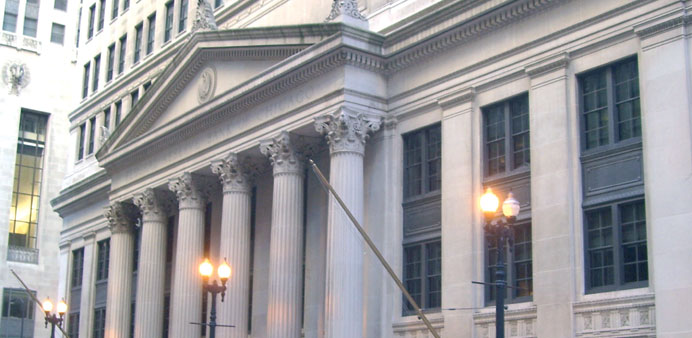September is here and for markets that usually means one thing: volatility. This year is shaping up to be a classic.
A looming confrontation in Syria is high up on a list of risks on the horizon but pivotal for investors will be the US Federal Reserve’s policy meeting in the middle of the month and a decision on whether the time is right to start trimming back its monetary stimulus.
“The move to tapering is a sea change,” said Sandra Crowl, a member of the investment committee for fund manager Carmignac Gestion.
“This would be the end of a 20-year US bond market rally, and the end of what has been multiple years of liquidity being injected into the US economy that has found its way into emerging markets,” she said.
If that was not enough to spark nervousness, the Fed’s decision comes as questions are being asked about China’s transition to a lower growth economy, and as Europe and Japan battle to pull away from long-running recessions.
That September is often a volatile month for investors has been well documented and it is the time when many are returning to their desks after the long summer break and formulating investment plans for the rest of the year.
Data on the Dow Jones Industrial Average, which stretches all the way back to 1896, shows September has historically been the worst month of the year, according to Russ Koesterich, the chief investment strategist for BlackRock.
Historically, September also has been the worst month of the year in a number of European markets — including Germany and the United Kingdom — and in Japan, Koesterich said in a note.
This year, markets are already on edge after an August that has seen the CBOE volatility index jump more than 20% to a three-month high when it emerged that Western nations were considering military action in Syria in response to a chemical weapons attack in Damascus.
September’s volatility trigger will likely be the US Treasury 10-year bond yield. It has spiked by almost 50% during the northern hemisphere’s usually quiet summer months to be near 3%, from just under 2% in early June.
Asset managers say it is not just how high the yield has risen but the speed of the move and its potential to overshoot, causing an effective and unwarranted monetary tightening, that provides the main risk to investors.
“Interest rates are the biggest visible pothole in the investment road,” said Kevin Gardiner, head of investment strategy for Europe at Barclays Wealth.
If all goes well and the US economy shows it can bear the weight of higher interest rates that could come with the expected Fed tapering in September, bigger flows into developed world equities seem most likely.
“To get some sort of return and to get some growth in your portfolio you do have to have a healthy weighting in stocks and you have to have the ability to grin and bear some short-term volatility,” Gardiner said.
Under this scenario Europe is still the favoured destination, due to signs of economic recovery in the eurozone and the UK, despite stocks recently outperforming other major developed markets.
The broad Stoxx Europe 600 index has dipped 0.35% in August as all risk asset markets were hit by a flare up in the Syrian crisis, compared with a drop in Wall Street’s S&P 500 index of about 2.8%.
“The debate is very much where should you be on Europe. Do you start moving overweight? But then you have the risks in the euro zone and they haven’t gone away,” Andrew Milligan, head of global strategy at Standard Life Investments said.
The fact that the Euro Stoxx index has only risen about 7% this year — less than half the 15% gain in S&P 500 US stocks — means it still has potential to gain.
Patrik Schowitz, global strategist for JP Morgan Asset Management sees another attraction: while European corporate earnings might not be that strong because the recovery has yet to fully take hold, on a price-to-book valuation European shares trade at a 25% discount to their historical average.
Their current price-to-book ratio is 1.6 times, against a 25-year average of 2.1 times, while emerging market equities are on a ratio of 1.5 times — an 18% discount to their 18-year average of 1.8 times.
“So on price-to-book the attractions of Europe are much clearer - and it looks even cheaper than emerging market equities,” said Schowitz. US equities are trading at a 12% discount to their historical price-to-book ratio.
It is in those emerging markets where September volatility could be most felt. Flows out of emerging market equities in particular have been gathering momentum during August in anticipation of a Fed tapering move.
Outflows from emerging market equity funds more than doubled in the latest week to $3.9bn from the previous week’s $1.7bn, investment banks said on Friday, citing data from Boston-based fund tracker EPFR Global.
Asset managers fret that if US interest rates rise too far in the run-up to the Fed’s next meeting on September 17-18, or in the weeks after it, these outflows will only accelerate.
Longer term, however, if the Fed manages to strike the right balance between tapering stimulus without jeopardising the recovery, then a global pickup in economic activity would be more likely and the view on emerging markets could shift.
“Emerging markets have become largely unloved and sentiment towards them overly negative,” Mouhammed Choukeir, chief investment officer for Kleinwort Benson, said.
“Fed tapering could add some more downside pressure, but given where valuations lie, they could represent a better opportunity than some developed markets,” he said.



